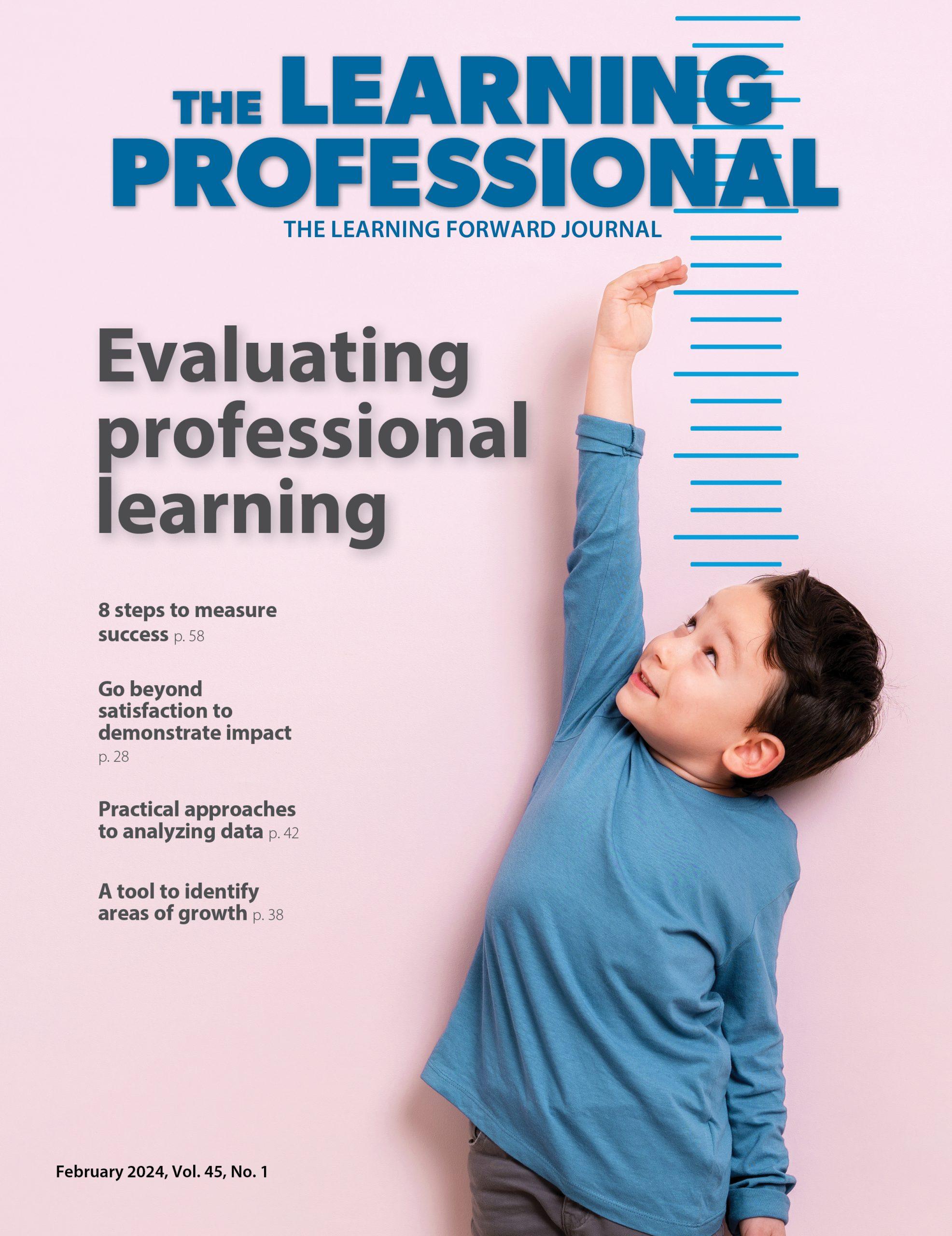Read the remaining content with membership access. Join or log in below to continue.
Sed ut perspiciatis unde omnis iste natus error sit voluptatem accusantium doloremque laudantium, totam rem aperiam, eaque ipsa quae ab illo inventore veritatis et quasi architecto beatae vitae dicta sunt explicabo. Nemo enim ipsam voluptatem quia voluptas sit aspernatur aut odit aut fugit, sed quia consequuntur magni dolores eos qui ratione voluptatem sequi nesciunt. Neque porro quisquam est, qui dolorem ipsum quia dolor sit amet, consectetur, adipisci velit, sed quia non numquam eius modi tempora incidunt ut labore et dolore magnam aliquam quaerat voluptatem.
Powerful Designs for Professional Learning, 3rd Edition
Edited by Lois Brown Easton
Filled with 24 learning designs — including 15 new — the latest edition of Learning Forward’s best-seller helps educators understand the kinds of learning experiences that result in changed practices and better results for students. More than 30 of the field’s leading experts in adult learning contribute to the 384-page book, which includes a link and password to dozens of exclusive online resources.
Learning Forward, 2015
$64 members;
$80 nonmembers
Product code B587
To order: www.lfstage.xyz/bookstore or 800-727-7288.
Steps in shadowing for the school hosting shadows
| Step1 | Prepare the host school. |
|
| Step2 | Prepare for the visit. |
|
| Step3 | The shadowing experience. |
|
| Step4 | Debrief. |
|
| Step5 | Debrief with the school community. |
|
Steps for educators who are shadowing
| Step1 | Prepare. |
|
| Step2 | Shadow. |
|
| Step3 | Debrief. |
|
| Step4 | Implement. |
|
Source: Easton, L.B. (Ed.). (2015). Powerful designs for professional learning (3rd ed.). Oxford, OH: Learning Forward.
Preparing to Shadow
- What is the purpose of the shadowing? What do those who shadow hope to learn?
- What special conditions will be needed for the shadowing to be effective?
- What critical elements affect the environment (school or district) within which the shadowing will be done? Describe the demographics and environment
- Student demographics.
- Teacher and administrator demographics.
- Facts, such as:
- Number of students;
- Number of staff;
- Grade levels served;
- Length of day and organization of day;
- Feeder school information; and
- District information.
- Culture.
- School’s mission, vision, and goals.
- Program parameters (“We always have a schoolwide gathering at the beginning of the day,” for example, or, “We don’t have interscholastic sports, but we do have very exciting intramurals.”).
- Curriculum expectations (standards, instructional methods, assessment techniques, etc.).
- How do these critical elements affect the purpose of the shadowing?
- What do you hope to do with what you learn from shadowing?
Source: Easton, L.B. (Ed.). (2015). Powerful designs for professional learning (3rd ed.). Oxford, OH: Learning Forward.
Learning Forward is the only professional association devoted exclusively to those who work in educator professional development. We help our members plan, implement, and measure high-quality professional learning so they can achieve success with their systems, schools, and students.
Categories: Learning designs
Recent Issues
LEARNING TO PIVOT
August 2024
Sometimes new information and situations call for major change. This issue...
GLOBAL PERSPECTIVES
June 2024
What does professional learning look like around the world? This issue...
WHERE TECHNOLOGY CAN TAKE US
April 2024
Technology is both a topic and a tool for professional learning. This...
EVALUATING PROFESSIONAL LEARNING
February 2024
How do you know your professional learning is working? This issue digs...








